A Comprehensive Guide To The Terms And Specifications Of Smartphones In Simple Language
Mobile Phones Have Glamorous Specifications, Which Makes It Difficult For Phone Buyers. In This Article, We Will Describe The Specifications And Terms Related To Mobile Phones In Simple Language. Do Not Miss This Comprehensive Phone Buying Guide.
Smartphones, When it comes to buying a mobile phone, you are faced with a wide variety of options from different manufacturers. Aside from discussing personal tastes and some biases – whether right or wrong – the most logical way to choose between products on the market is to look at their specifications and compare them. But these characteristics and the terms used in it are often confusing and incomprehensible; Even for people who have acceptable technical knowledge in technology and computers.
To a teenager today, the Nokia 1100, perhaps the best-selling phone in history, is just a piece of brick with the ability to make calls and send and receive text messages.
There are several criteria to consider when choosing a phone.
The most important criteria were the phone’s antenna power, battery life, and the body’s resistance to impact or fall in recent years. Over the years, with the addition of many features to phones, we have reached a point where screen size and quality, device processing power, storage and RAM, shooting and video quality, waterproof, and many more have been added to the basic standards.
To a teenager today, the Nokia 1100, perhaps the best-selling phone in history, is just a piece of brick with the ability to make calls and send and receive text messages.
Of course, we do not intend to discuss history here. Still, it shows that things we can even imagine now will add to our handsets capabilities and decision-making in a few years, and the next generation will mock our powerful flagship phones today.
Let’s get back to the point. When we look at the smartphone’s specifications, we may not understand the meaning of many things. In some sections, we also encounter several numbers and quantities that we can not identify, which are more decisive, making comparisons more difficult.
To understand each of these numbers, there is a need to read separate content on the Internet. Still, in this article, in several sections, we will introduce and explain the most important things that can be effective in choosing a smartphone so that you do not need to refer to other content as much as possible.
CPU ( Processor ); On-chip ( SoC )
Processors are the most important component of a smartphone. On smartphones, these components are a set of components such as the processing unit, image processing unit, and radio receiver of the device on an integrated circuit sometimes referred to as the on-chip system or SOC. Or chipsets are also known. As the name implies, the processing operation in the phone takes place in this section, and therefore, the CPU Or the processor can be considered the mastermind of the device.
The first criterion for a processor is the speed of processing operations, which is introduced in GHz. Each GHz in processor speed means the ability to execute one billion processing instructions per second. Naturally, the higher this number and this value, the higher the processing speed of the device.

In addition to speed, the production and use of multi-core processors have become so common in recent years that almost no smartphone now uses a single-core processor. Having multiple independent processing cores gives you the ability to run multiple applications on your device simultaneously.
So, in general, the higher the processing speed and the higher the number of cores, the more processing power of the device and the possibility of running several programs together.
Most phones on the market now come with four processing cores. Of course, in these cases (and all other cases), the need and type of use must also consider. Naturally, for a user who uses the phone only for normal applications such as calling, sending and receiving messages, and browsing, a high-speed processor with too many cores, will not work and will only increase the phone’s price.
Manufacturers and brands
There are several major manufacturers of mobile processors in the market. The largest and most famous manufacturer is Qualcomm, which produces Snapdragon brand chipsets.
There are several major manufacturers of mobile processors in the market. The largest and most famous manufacturer is Qualcomm, which produces Snapdragon brand chipsets. Many phones with the Android operating system use Snapdragon. These chipsets are three-digit models, including the 200, 400, 600, 700, and 800 series. The naming of Snapdragon processors is largely such that the larger the model number, the faster and more powerful the piece. So, for example, the Snapdragon 835 is a high-end processor, and the Snapdragon 435 is one of Qualcomm’s low-end processors.
Another major manufacturer in this field is the Chinese company MediaTek. The handsets produced with these processors are more common in Asian markets. MediaTek’s most powerful processors are the Helio X series product line and the Helio P series. Most other MediaTek products with MT67xx pattern It is introduced that again any number that instead of xx The higher it is, the more CPU power. For example, MT6753 Faster processor than MT6738Is. However, for a better comparison of processor speeds, you can refer to the various benchmarks published on the Internet.
Other companies also produce processors specifically. Huawei launches its Kirin smartphone processor to go to market. Samsung in some markets Exynos processors It uses it on its phones, and Apple also uses A series processors Has put himself on its iPhones. For example, Samsung’s former flagship, the Galaxy S8, was sold in North America with Qualcomm’s Snapdragon 835 processor and elsewhere with the Exynos 8895. Apple’s iPhone 7 also has an A10 chip, And Meizu Pro 6Meizu company from Helio X25 MediaTek benefits.
Memory; RAM, storage memory, and memory card
Currently, it can say that two gigabytes of RAMares are necessary for the proper functioning of an Android phone, and there are devices with three, four gigabytes, or more on the market.
In the field of memory in smartphones, we usually encounter two separate parts and two different numbers. Random-access memory or RAMAnd the device’s internal memory, known as storage space. RAM is the part of memory directly related to the processing of a device and the execution of programs. When you open an application, the main parts of the application are loaded in this part of the RAM – which is much faster than the storage memory – and the phone’s processor will contact the RAM. The more programs running, the more memory this space takes up. Therefore, a high-capacity RAM can help several programs run simultaneously. Currently, it can say that two gigabytes of RAM are necessary for the proper functioning of an Android phone, and there are devices with three, four gigabytes, or more on the market.
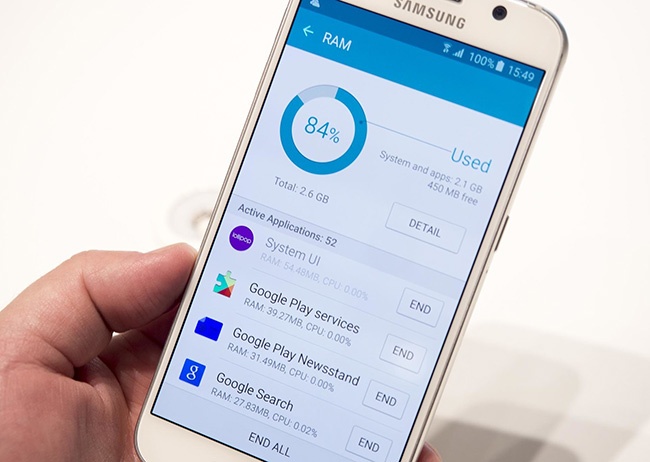
The other part of the memory is the internal memory or storage of the phone with other names such as flash memory or even ROMIs, also known. This section is where you store your information (pictures, videos, songs, etc.). The typical internal memory of most smartphones is currently 16, 32, 64, and 128 GB. You should note that part of this memory is related to the maintenance of the operating system and update files of the device and is not available to the user. In a better sense, this part can be ROM Or read-only memory, which is normally “read-only,” We will need to flash the phone to change it.
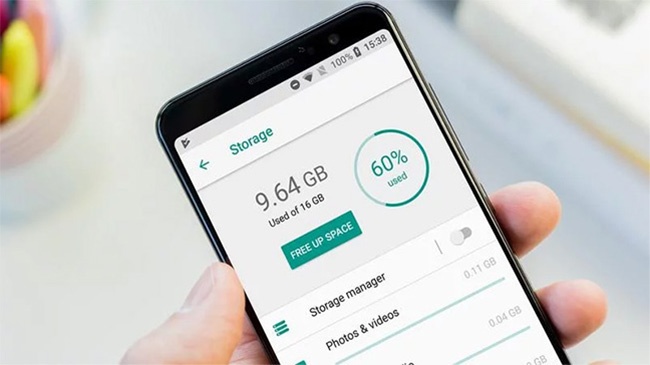
In the discussion of memory, we have a third party that is not a fixed component of a smartphone. External memory or memory card, which most phones support today, is essential for users who are not satisfied with their phone’s internal memory. Some handsets use the dual second slot of their SIM card to insert one of the two memory cards or SIM cards, and on some devices, this slot is specifically for MicroSD cards. There is. The amount of memory card capacity support also varies from phone to phone.
Display Screen
technology has changed a lot in recent years. There are several criteria for choosing a phone display. The size of the screen, the sharpness of the image, and the colors and brand names used for it are influential in this area.
Or Resolution Resolution
The resolution introduced several pixels that can display on a screen. In today’s monitors, millions of pixels can be placed on the screen, the resolution of which is usually indicated by multiplying two numbers by each other. Various resolutions such as 1280 7 720 or HD or720p And 1920 10 1080 or full-length or 1080pThey are the most common values in today’s phones. Flagship handsets with a resolution of 2160 × 3840 or4KAnd 1440 × 2160 or QHDThey also benefit. As expected, the higher the number of pixels on the screen, the clearer the images.
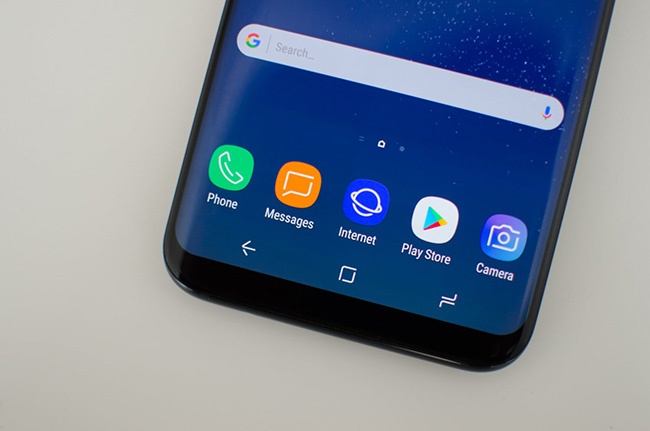
The screen aspect ratio of different phones can also vary. The 16: 9 aspect ratio was the most common display on phones in previous years, but now, many smartphones have 18: 9 aspect ratios. Of course, 18: 9 can be introduced as 2: 1, but probably for commercial reasons and not to induce a sense of small screen and better show the difference along with 16: 9, the 18: 9 combination has been used.
In some products, this ratio is different. For example, the Galaxy S8 and S9 are a bit longer, and their display resolution is 1440 x 2960, which is from the QHD standard. It goes a bit higher, and its length-to-width ratio becomes 18.5: 9 more precisely.
The 16: 9 aspect ratio was the most common display on phones in previous years, but now, many smartphones have 18: 9 aspect ratios.
Another point that is also very important is the screen size, which creates two new criteria: pixel density or PPIAnd Screen-to-Body Ratio. The screen size is the diameter of this page. The number of pixels, or the screen’s resolution to the screen’s size, is equal to the pixel density, which indicates the number of pixels per inch of the screen. Resolution alone cannot determine resolution. The higher the pixel density, the higher the image resolution.
So a 5-inch full-screen screen will look sharper than a large screen with the same resolution but 6.5-inch size. The ratio of the screen to the body does not need much explanation. With the advancement of smartphone manufacturing technology, the extra edges around the screen are getting thinner day by day, and this ratio is now close to 90%.

Screen technologies
Again, numbers do not fully convey everything. There are several technologies in the construction of display screens, each of which affects the quality of the display. Two pervasive technologies, different displays with liquid crystal or LCDAnd organic or OLED light-emitting diodes are. The main difference between the two technologies is the way they are used to illuminate the pixels. On the LCDThey use a bright screen on the back of the screen. This means that even if the image on the screen is supposed to be completely black, the background light is still on, and sometimes this light will leak around the screen and be visible.
In contrast, in OLED displays, the organic substance is used to illuminate each of the pixels. As a result, a pixel can be turned on or off on its own, and when turned off, we can see the true black color seamlessly around the light. This also saves battery power; Because in many cases, especially when viewing dark images, part of the screen should show black, and in this case, those parts will not consume energy. The same feature in the screens of Moto series phones is also used to display white alerts on the completely black background of the phone while the device is locked.
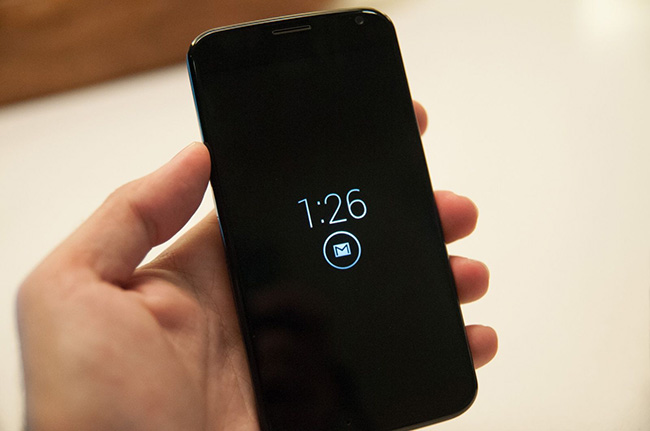
But OLED displays also have negative characteristics. For example, not using backlighting makes the overall screen brighter than LCD screens less. In addition, it is said that the loss of quality and the probability of failure of these pages is slightly higher than its older competitor. But the most important problem with OLED screens high cost and difficulty of their production, but with more advances in this field and the entry of more manufacturers in this field, this distance is gradually reduced, and OLED displays are seen. We will be more in the market.
Another term that should be used about LCD screens is now the word IPSIs. In contrast to older TN technologies And TFT, Monitors from IPS have a wider viewing angle and produce better colors.

Apple fans may be looking for an explanation for the term RetinaTo be. Retina actually goes back to the same discussion of pixel density and the fact that in normal use and at a distance of 20, 30 cm from the phone screen with the human eye, the pixel density above 300 will not be detectable. Therefore, there is little justification for producing screens with a higher pixel density, and Apple produces the screens of its iPhones accordingly. Of course, this will not be true in applications such as the use of the phone in virtual reality glasses.
In addition to image quality and clarity, one of the major concerns in using screens is the vulnerability of the piece of glass. To address this concern, technologies such as Gorilla Glass owned by Corning have produced plates resistant to breakage and scratches. A similar technology called ShatterShield was Also introduced and used by Motorola.
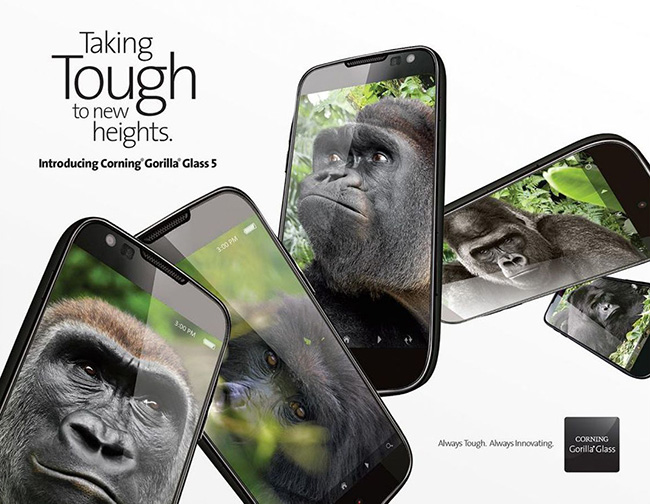
Batteries
Introduce the capacity of batteries in milliamperes per hour. The higher the battery capacity, the longer the phone can last and, of course, the longer it takes to charge the battery. But these issues, in addition to battery capacity, also depend on other factors such as the power consumption of the software and operating system, the type and size of the display, and the type of phone used. The heavier and more expensive the applications and the more powerful the hardware used for smartphones, the higher the capacity of the batteries will need.
For example, you can think of a few years ago when Apple’s first iPhone product used a 1400 mAh battery, but the iPhone came with a battery more than double that of 2900 mAh. Some other products are introduced with more powerful batteries for longer use. For example, Moto E4 PlusMotorola came with a large 5000 mAh battery. However, high-capacity power banks are still used when the charger cannot connect to the phone.
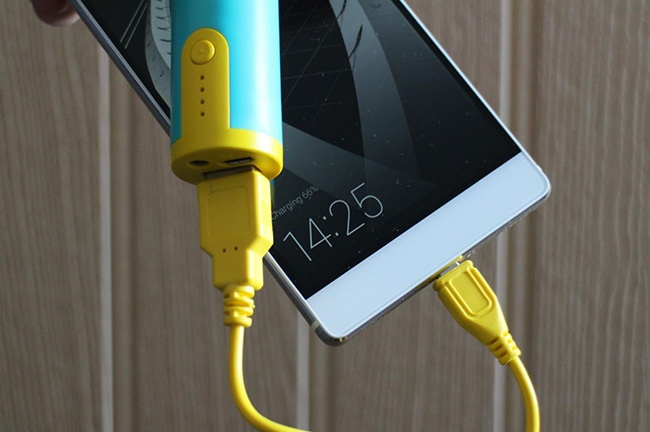
One of the biggest drawbacks of high-capacity batteries was the long time it took to charge them fully. But with fast charging technologies like Qualcomm technology, this problem has now been solved for many of the most powerful phones on the market. Using Quick Charge adapter Qualcomm, you can get more power into your smartphone in less time without any problems. For example, with the help of fast charge 4, the latest version of this technology, it is possible to create 5 hours of battery charge in just 5 minutes.
Another problem with batteries and their charging is the need to use wired chargers. To solve this problem, innovations in wireless charging have been done for a long time. There are currently two industry standards for Qi wireless charging And PMA. Some phones support it, can be charged using being on a screen without connecting any cables.
These two standards are not significantly different, and most existing phones with wireless charging work with both. Wireless charging is performed using two coils, one on the charger plate and the other on the device’s body, and electromagnetic induction.
Therefore, some movement of the phone on the screen will interrupt the charging process. Another problem with this is that wireless chargers are still unable to charge the battery at high speeds. Of course, if you are interested in wireless charging and your phone does not support it, you will also have the chance that a frame with wireless charging capability has been produced for it and will help you in this regard.
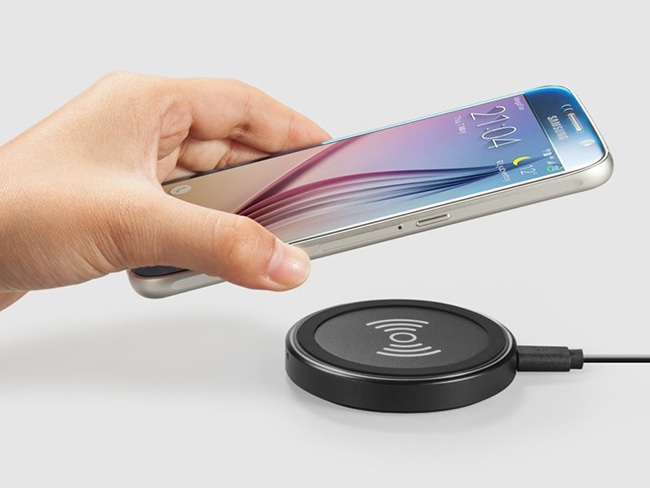
Camera
Another feature that is crucial for many users when shopping is the smartphone camera. Every day we see higher specifications for the cameras, which sometimes confuses or even confuses buyers.
Megapixels The
resolution of images recorded with the camera is expressed in megapixels. For many of these people, the value of this parameter is the most important point in the quality of a camera. When we talk about a 12-megapixel camera, we are actually describing a camera that can capture an image with a width of 3,000 and 4,000 pixels. Of course, the more pixels recorded, the more detail and sharpness, but the resolution can not say anything about the amount of light or colors in the image – which has a big impact on the quality of the image.
Shutter or Aperture
the aperture of a camera lens to f / XY Shows that x Andy can be integers. The smaller the number, the more aperture we have, so more light can enter the camera lens when capturing an image. In digital cameras, the aperture is adjustable. Still, in smartphone cameras, it is a fixed number, so the greater the aperture, the better the shooting in low light environments, the better the depth of field and the background blurring.

The aperture of flagship phones is getting smaller every year, and now phones with f1.7 lenses، F / 1.8And f / 2 can be seen in the market, but along with this issue, the use of image processing methods helps to create higher quality images in them.
Combining multiple cameras
Combining multiple cameras has now become a common theme in high-end and even mid-range phones on the market. Many manufacturers have made it possible to capture better images by using multiple cameras and software capabilities to take advantage of their power. The iPhone 7 Plus, for example, uses a standard lens alongside a telephoto lens. With the help of the second lens, the iPhone 7 Plus has doubled the optical zoom capability in its camera. A feature not typically found in smartphones, and instead has only a digital zoom. In addition, it is possible to give depth to the image, especially in capturing portrait images.
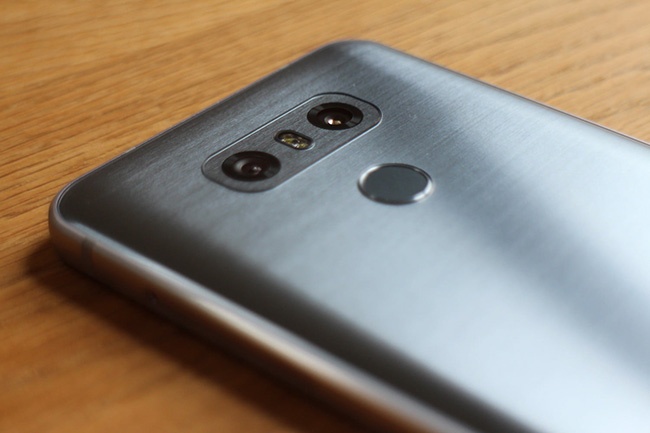
Another example is LG in its previous flagship, and the G6It uses a second camera to capture images with a much wider viewing angle than photos taken with a regular lens. These days, the production of phones with triple and fifty cameras has also been discussed, but the need to use this number of lenses can discuss in more specialized content.
Other Camera Capabilities
Some cameras in smartphones allow you to capture images using HDR technology also provide. With the help of HDR, Take a series of photos of a scene with different levels of brightness, and the phone’s camera software combines and displays these images. This combination can be useful in cases where some parts of the subject are darker than others.

There are some things in video recording with the phone’s cameras that are worth mentioning. One of the same is the resolution of the videos recorded by the camera. Several frames are recorded per second, or FPSAnother important number is also. Most flagship phones have the ability to record video at 60 frames per second and full resolution or even4KHave. Another important technology in this area is image stabilization, which is used to counteract image shake when moving the camera. Better and more professional cameras than OISOr use optical image stabilization, and some phones use digital image stabilization, a software method. However, OIS is better and more effective.
Connections and communications
Charging port
In today’s smartphones, three types of ports are used for charging and transferring data wirelessly. Apple products from its own portal, LightningThey use a dedicated portal for the same company. On Android phones, from USB used. Most high-end products on the market are USBType COr USB-C for short, and they are used in front of the older Micro USB port, Faster in data and energy transmission. While USB-CAnd LightningBoth have the ability to turn around, and like older USBs, it doesn’t matter which way they connect to the phone.
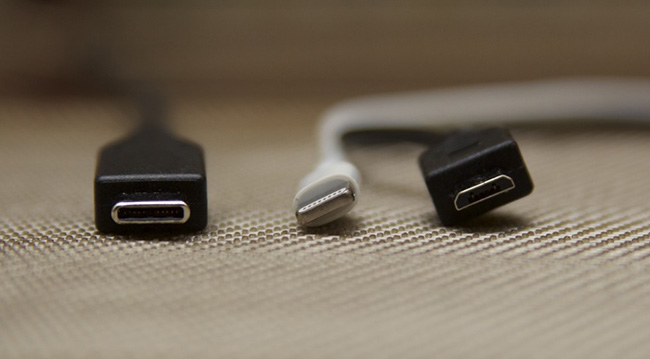
Bluetooth is a
the standard that may or may not has been the deciding factor in choosing a mobile phone, but now it is possible to connect to almost all phones. Perhaps the only discussion is about the existence of different versions. Bluetooth is used to send and receive data at close range, and currently, the most common use is to connect peripherals such as wireless headsets, mice and keyboards, wireless speakers or watches, and smart wristbands to the phone. The latest version of this technology is Bluetooth 5, which has improved data transfer speed and battery consumption.
NFC NFC
connectivity other wireless technology allows the phone to perform private actions while standing next to a particular tag. This feature is currently used in electronic payments to transfer photos or contacts to other devices.
Data
In terms of connecting to SIM card data, we do not have many discussions, and most smartphones on the market are of the LTE standard. They support. LTE In terms of speed higher than the third generation, i.e., 3GIs. But we should probably see the arrival of handsets with connectivity soon5GIn that case, it would naturally be more justifiable to provide a device that could support the newer standard. Of course, these issues are slightly different in different countries and depend on when a new telecommunications standard enters that country. In countries like the United States, handsets are also offered by telecommunication operators. In addition to attractive installment payment methods, the device may be locked on a specific band belonging to that operator and not be used with other SIM cards, which is currently the case in our country. , Has no special place for discussion and concern.
Other features of smartphones that help them connect to the Internet cheaper include WiFiIt is in them that there is still no question of its existence or non-existence. Some phones are standard802.11ac Support is newer and faster, and standard on cheaper phones 802.11nIs supported. Possibility of WiFi There are also dual bands that can connect to regular 2.4 GHz or newer 5 GHz networks, which are faster and usually quieter.
Other features
Water and dust resistance
Many of the flagship handsets on the market come from IP- certified certifications. Get benefits. International protection certificates are issued in two sections, one for each IP number. Placed. The first number indicates the phone’s resistance to dust and dust, and the second number indicates the device’s resistance to water. The higher these numbers, the higher the resistance level. For example, IP67 certified devices can last at a depth of one meter for 30 minutes, and are IP68 certified indicates the phone’s resistance at a depth of one and a half meters.
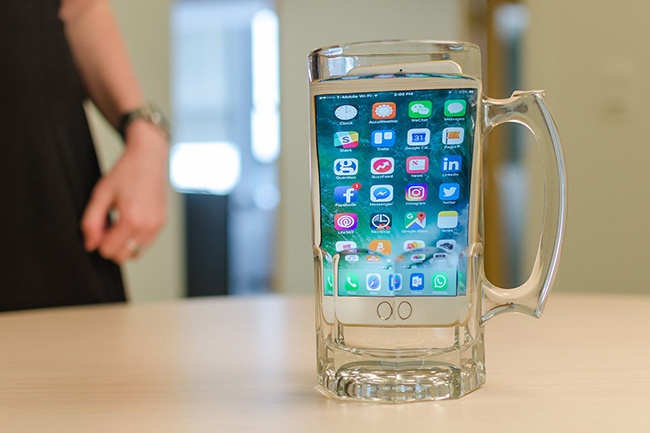
Sensors
There are several sensors on smartphones. Accelerometer sensors and gyroscopes are used to auto-rotate the screen in different phone positions or specific software functions when shaking the phone. Proximity sensor when making a call and placing the phone on the ear, it does not interfere with the operation of the device at the moment of contact with the screen. GPS location sensors and GLONASS can also connect to US and Russian satellites, making routing and location matters possible for the user.











